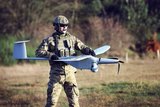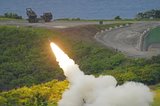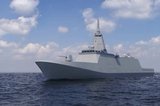Northrop Grumman's CLIP ready for fielding
Northrop Grumman has announced that its Common Link Integration Processing (CLIP) system being developed for the US Air Force (USAF) has received Milestone C acquisition approval, paving the way for the fielding of this software package and providing aircrews with enhanced capabilities to communicate critical tactical information.
CLIP software, designed for a USAF programme that also includes US Navy (USN) platforms, translates and formats messages and allows existing platforms without a tactical data link, as well as platforms with different data links, to communicate with each other.
Northrop Grumman is integrating CLIP in B-52 aircraft and the USN MQ-4C Broad Area Maritime Surveillance Unmanned Aerial System (BAMS UAS), a maritime version of the USAF RQ-4 Global Hawk unmanned air vehicle.
According to Northrop Grumman, the Air Force Electronic Systems Centre approved the CLIP Milestone based on criteria including software maturity, operational assessment, interoperability and supportability, life-cycle affordability and information assurance.
The CLIP system provides a common approach to integrating tactical data links and Internet protocol connectivity. The CLIP software is integrated into combat weapon and command and control systems to enable tactical data link capabilities. The system was integrated as part of the B-1B Lancer Fully Integrated Data Link program demonstrated in 2010, proving the ability to exchange real-time unit and tracking information via the line-of-sight Link 16 data link and the Joint Range Extension Application Protocol (JREAP) networks. JREAP extends the range over which data messages can be transmitted via a satellite channel. The Joint Interoperability Test Centre issued Link 16 and JREAP A Standards Conformance certification for CLIP earlier this year.
More from Naval Warfare
-
![Future Canadian Continental Defence Corvette will provide “Halifax-equivalent capabilities”]()
Future Canadian Continental Defence Corvette will provide “Halifax-equivalent capabilities”
Although the CDC project is still in its early stages, the Canadian Department of National Defence already has some requirements for the future platforms.
-
![NATO tests use of “undetectable, jam-proof” laser communication in maritime scenarios]()
NATO tests use of “undetectable, jam-proof” laser communication in maritime scenarios
As part of its effort to better prepare its capabilities for operations in contested and congested scenarios, NATO evaluated a Lithuanian ship-to-ship terminal designed to not be susceptible to enemy interference.
-
![US Navy advances with the Harpoon Service Life Extension Programme]()
US Navy advances with the Harpoon Service Life Extension Programme
The US Navy plans to improve Harpoon’s anti-ship and land attack capabilities by equipping the missiles with sensors and technologies required for succeeding in future battlespace.
-
![Future of the Canadian Patrol Submarine Project is still unclear]()
Future of the Canadian Patrol Submarine Project is still unclear
The Canadian government remains tight-lipped on the timeline and funding required for the next steps of its Canadian Submarine Patrol Project, which should offer improved capabilities for the country’s navy.
-
![Mitsubishi eyes future with Australia’s Mogami selection]()
Mitsubishi eyes future with Australia’s Mogami selection
With Australia’s selection of the Mogami-class for Project Sea 3000, Mitsubishi is investigating local production in the next decade as potential export opportunities emerge.
























